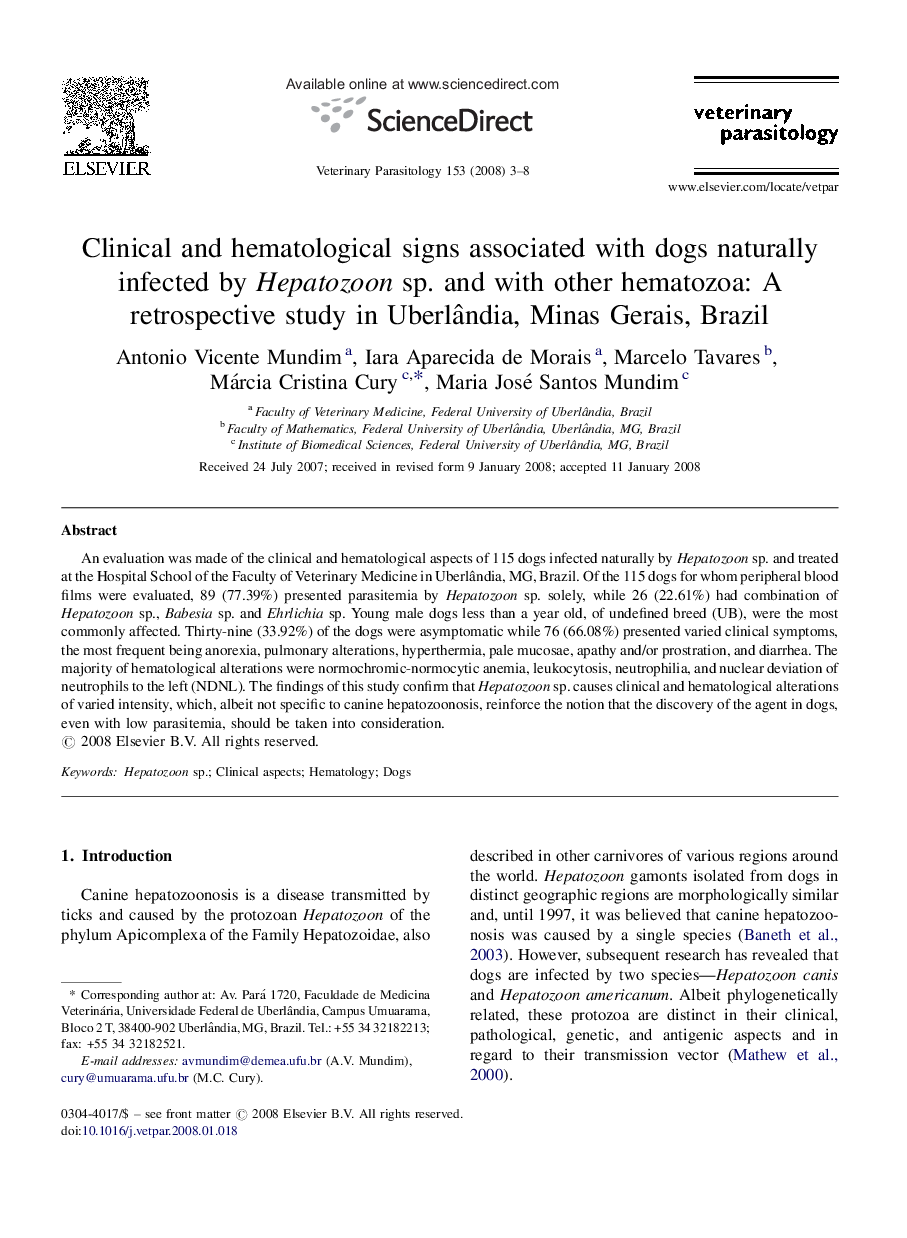| Article ID | Journal | Published Year | Pages | File Type |
|---|---|---|---|---|
| 2471600 | Veterinary Parasitology | 2008 | 6 Pages |
An evaluation was made of the clinical and hematological aspects of 115 dogs infected naturally by Hepatozoon sp. and treated at the Hospital School of the Faculty of Veterinary Medicine in Uberlândia, MG, Brazil. Of the 115 dogs for whom peripheral blood films were evaluated, 89 (77.39%) presented parasitemia by Hepatozoon sp. solely, while 26 (22.61%) had combination of Hepatozoon sp., Babesia sp. and Ehrlichia sp. Young male dogs less than a year old, of undefined breed (UB), were the most commonly affected. Thirty-nine (33.92%) of the dogs were asymptomatic while 76 (66.08%) presented varied clinical symptoms, the most frequent being anorexia, pulmonary alterations, hyperthermia, pale mucosae, apathy and/or prostration, and diarrhea. The majority of hematological alterations were normochromic-normocytic anemia, leukocytosis, neutrophilia, and nuclear deviation of neutrophils to the left (NDNL). The findings of this study confirm that Hepatozoon sp. causes clinical and hematological alterations of varied intensity, which, albeit not specific to canine hepatozoonosis, reinforce the notion that the discovery of the agent in dogs, even with low parasitemia, should be taken into consideration.
